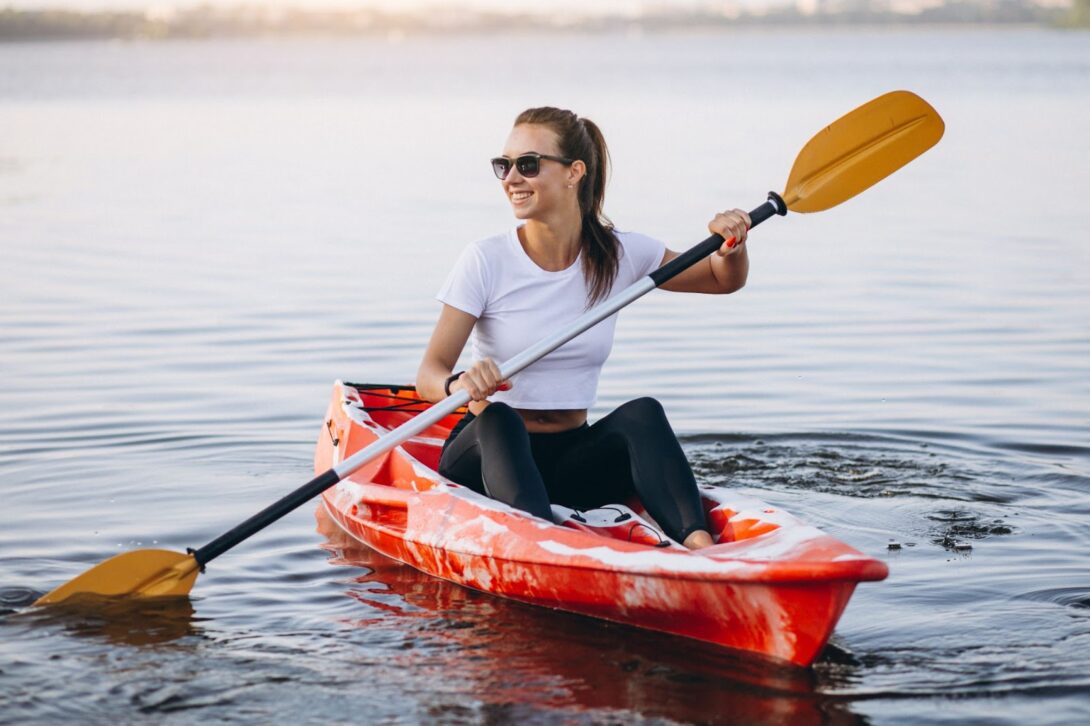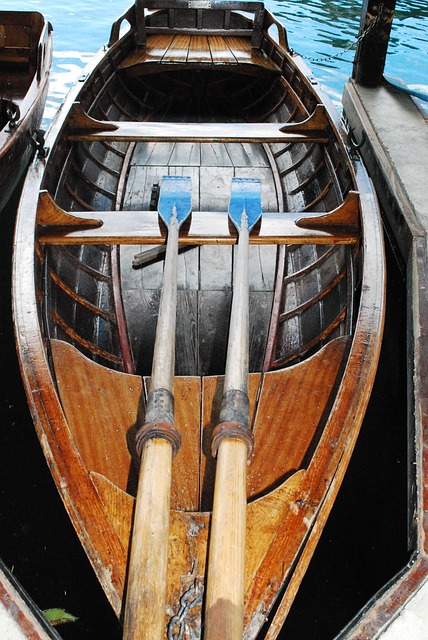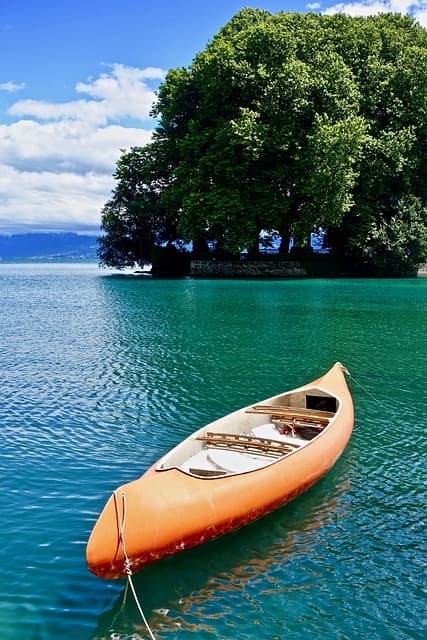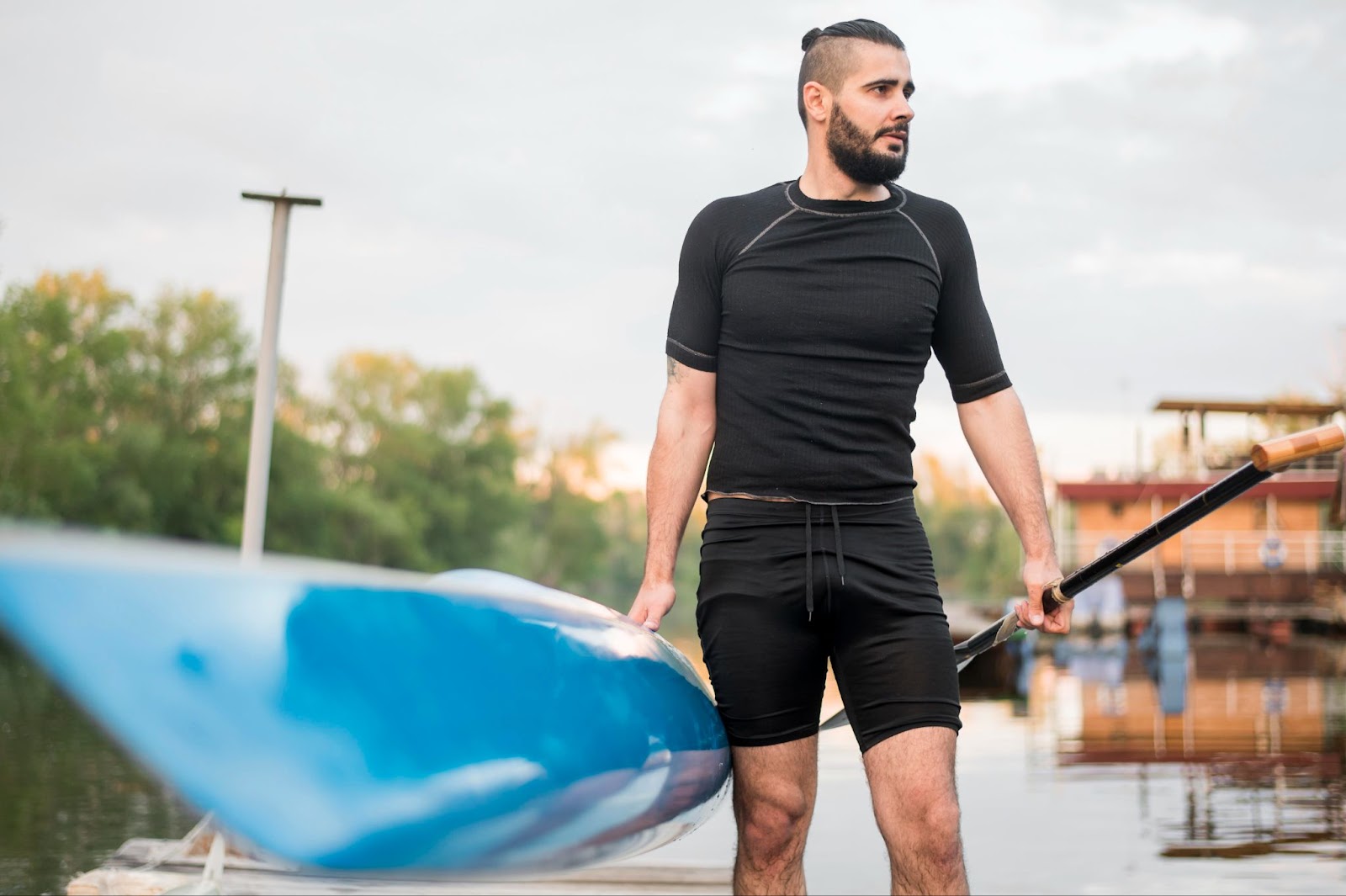Gratefully, the regulatory authorities entrusted with the oversight of boating provisions in the state of Missouri have embraced the principle that simplicity is paramount. Within the realm of Missouri’s canoe and kayak regulations, a provision exists wherein watercraft lacking motorization are granted an exemption from the requirement of registration. Nonetheless, a stipulation of utmost importance mandates that each individual embarking upon canoes or kayaks must be accompanied by a personal life-saving flotation device, more commonly referred to as a life jacket. Furthermore, an obligatory inclusion necessitates the presence of a conspicuously loud auditory signaling apparatus, exemplified by a whistle, aboard these vessels.
Exploring the Navigational Regulations of Canoeing and Kayaking in Missouri
The Tranquil Waters and Regulatory Vigilance: Navigating Canoeing and Kayaking Laws in Missouri
When it comes to the serene waterways that weave through the picturesque landscapes of Missouri, the stewardship of safe and responsible boating falls under the jurisdiction of the Missouri State Highway Patrol, Water Patrol Division. This dedicated governing body takes upon itself the pivotal role of shaping and enforcing the boating laws that guide the rhythmic strokes of canoeists and kayakers across the state’s aquatic realm.
Diving Deeper: The Essentials of Canoeing and Kayaking Regulations
Delving into the nuances of Missouri’s boating laws unveils a tapestry of regulations that seek to harmonize recreational enjoyment with environmental preservation. It’s important to be well-versed in these regulations before embarking on your waterborne adventure. A comprehensive source for these regulations awaits your exploration, providing a roadmap to informed boating endeavors.
The Registration Riddle: Powered versus Human-Powered Craft
In the heart of these regulations lies the question of registration. Distinct categories emerge—human-powered craft and powered vessels. As you embark on your paddling odyssey through the gentle waters, the need for registration depends on the power source propelling your vessel. Unpowered, human-powered boats gracefully glide under the radar of registration requirements, while their motorized counterparts must be duly registered and titled to navigate these aquatic avenues.
Titles: Anchoring Your Canoe or Kayak
Ensuring your canoe or kayak bears a title is a crucial checkpoint on your aquatic journey. Without this documentation, a financial tempest awaits, prompting a reconsideration of sailing on the seas of legality. Secure your vessel’s title to safeguard your navigation along the streams and rivers of Missouri.
The Oars of Licensing: Human-Powered Craft
For those who harness the currents with the strength of their own sinews, the labyrinthine corridors of licensing can be bypassed. If your canoe or kayak dances upon the water through human power alone, the need for registration and licensing evaporates like mist upon the riverbanks. The purity of your propulsion exempts you from these regulatory waters.
Steering through Age and Supervision: Powered Craft Operations
Yet, should your vessel embrace the assistance of a motor’s hum, an age-anchored riddle emerges. The riverways decree that operators of motorized canoes and kayaks must be at least 14 years of age, fortified by the possession of a boater safety card. In the absence of this certification, the rudder may only be guided under the vigilant gaze of a mariner no less than 16 years old.
The Compass of Boating Education: Navigating Certification
Like constellations guiding sailors across the celestial expanse, the realm of boating education unveils its luminous edicts. If your birthpost falls beyond January 1, 1984, you are entrusted with the sacred task of bearing a Boater Education Card and an identifying visage. These totems of knowledge must accompany you on your maritime escapades, underscoring your commitment to responsible navigation.
Tides of Sobriety: The Tempest of Operating Under the Influence
As the currents of regulation flow, the edict against navigating under the intoxicating haze of alcohol or drugs stands firm. The tendrils of this law embrace all vessels that dance upon Missouri’s waters, from motorboats to canoes and kayaks alike. With a blood alcohol content of 0.08% serving as the watermark of violation, the call for sobriety reverberates across the waterways.
Safety Anchors: Emergency Equipment Requirements
Amidst the poetry of boating, the pragmatic embrace of safety remains paramount. In the maritime tale of Missouri, the saga of emergency equipment requirements unfolds. The very essence of responsible navigation finds embodiment in the wearable personal flotation device—a guardian of life adorning every passenger aboard your vessel. The armamentarium of emergency equipment extends further, encompassing U.S. Coast Guard-approved life jackets and a luminous white navigation light, each holding steadfast against the veils of low visibility. Moreover, when venturing onto Federal waters during the ethereal hours between sunset and sunrise, the clarion call for a visual distress signal resonates. To sound the alarms of safety, a sound-producing device, often manifested as a resolute emergency whistle, stands as the vanguard of alertness.
Navigating the Waters: Essential Boating Equipment Requirements in Missouri
As you embark on your aquatic adventure in the picturesque waterways of Missouri, it’s crucial to familiarize yourself with the state’s specific regulations and recommendations concerning boating safety equipment. While each state holds its unique interpretation of mandatory provisions and suggestions pertaining to life jackets, the significance of these measures cannot be understated. Even for proficient swimmers, donning a Personal Flotation Device (PFD) has evolved into an instinctual practice that promises an added layer of security and peace of mind.
Delving into the realm of waterborne exploration, let’s explore the comprehensive array of gear indispensable for both legal compliance and a safeguarded journey across Missouri’s aquatic expanse.
Mandatory Life Jackets: Ensuring Uninterrupted Security
Central to the ethos of watercraft safety is the requirement for a readily accessible and wearable PFD, known as a Personal Flotation Device. Missouri legislation necessitates the possession of a Type I, II, or III PFD (or a wearable Type V) for every individual embarked upon your canoe or kayak. This stipulation extends to vessels shorter than 16 feet, wherein a USCG-approved PFD is obligatory per person on board. In the context of longer canoes exceeding 16 feet, the onus is on securing a wearable USCG-approved PFD for each passenger.
A pivotal facet deserving special attention pertains to the youngest adventurers. Children below the age of 7 must consistently don life jackets while the canoe is in motion—a vital provision amplifying child safety during aquatic escapades.
Throwable Flotation Devices: An Added Layer of Preparedness
While mandatory life jackets constitute the cornerstone of boating safety, the inclusion of throwable flotation devices, though not obligatory for canoes or kayaks, is a prudent choice. These devices serve as an additional layer of preparedness, facilitating timely response in exigent circumstances. In the spirit of comprehensive safety, the voluntary incorporation of such equipment can be a judicious decision, contributing to a well-rounded safety strategy.
Manual Bailing Device: Empowering Proactive Maintenance
While not officially mandated, the inclusion of a manual bailing device emerges as a highly recommended aspect of a well-prepared boating expedition. This versatile tool enables proactive maintenance by allowing water to be expelled from the vessel—a practice instrumental in preventing the onset of potential hazards. The wisdom of embracing such a device is underscored by its capacity to mitigate unforeseen challenges, exemplifying a proactive approach to safety.
Visual Distress Signals: A Salient Precaution
The waters of Missouri, replete with their scenic allure, demand a nuanced approach to safety. The need for Visual Distress Signals (VDS) is contingent upon your presence in Federally-controlled waters. Specifically, the requirement to carry VDS is activated when navigating after dark. In scenarios where your aquatic journey extends beyond daylight hours, a minimum of three night VDS, or their day/night counterparts like flares or red meteors, are mandated. It’s noteworthy that human-powered canoes and kayaks are exempted from the daytime VDS requirement, further aligning regulations with the unique attributes of these craft.
Illuminating the Night: Navigation Lights for Unpowered Vessels
The concept of nighttime safety is enriched by the stipulation for navigation lights. Unpowered vessels, ensuring a safe sojourn through waterways, are mandated to feature a bright white lantern of adequate luminosity. These lights come into play during the vessel’s stationary or in-motion phases, bridging the time frame between sunset and sunrise. This provision stands as a testament to Missouri’s commitment to bolstering safety standards across diverse boating scenarios.
Audible Vigilance: Sound Devices for Effective Communication
A pivotal facet of navigating waterways safely lies in effective communication. Missouri’s regulations mandate canoes and kayaks to incorporate a sound-producing device with auditory reach over substantial distances. Unlike the conventional notion of utilizing loud human voices, the stipulated sound device ensures a standardized means of communication capable of transcending the water’s ambient soundscape.
Innovative Readiness: Emergency Locator Beacons
While not mandated by regulatory frameworks, the inclusion of Emergency Locator Beacons is a proactive measure that resonates with an ethos of preparedness. Advocating for the comprehensive safety of canoeists and kayakers, the incorporation of this cutting-edge equipment is endorsed unequivocally. This beacon, serving as an emergent link to rescue operations, epitomizes a forward-looking approach to waterborne safety, transcending geographical constraints.
Towards a Comprehensive Vision: Charting Fire Extinguishers and Emergency Preparedness
The contours of safety in the aquatic realm do not mandate the inclusion of fire extinguishers in canoes and kayaks. However, the discussion of emergency preparedness remains intrinsic to our exploration. Proactively fostering a culture of readiness, the contemplation of fire extinguishers and similar preparatory measures underscores the overarching commitment to safety in waterborne pursuits.
Is the Donning of a Life Vest Necessary While Engaging in Kayaking or Canoeing Across the Waters of Missouri?
When embarking upon the aqueous domains of Missouri via canoes or kayaks, of varied dimensions and lengths, a mandatory stipulation unveils itself: the presence of a US Coast Guard-endorsed personal flotation contrivance of Type I, II, or III category per individual embarked.

For those youthful denizens who have not yet treaded beyond the seventh year of their existence, a dual requirement arises. These fledgling mariners are compelled not only to possess an approved personal flotation gadget but also to envelop themselves in its secure embrace whilst ensconced within the vessel’s confines, particularly during instances of vessel mobilization.
Prudence beckons the heralding of a salient observation, one that underscores the essentiality of the personal flotation apparatus maintaining a state of impeccable integrity. Thus, precluding any manifestation of distress such as fissures, ruptures, or fractured tethers. Moreover, an additional prerequisite emerges—swift accessibility. The chosen personal flotation adjunct must be positioned within arm’s reach, facilely available should exigent circumstances arise. Lastly, the significance of proportionality is accentuated—the girth and dimensions of the personal flotation device ought to be commensurate with the physique of the end-user for whom it is designated.
Emergency Sound Device (Missouri Boating Law): Enhancing Safety with Auditory Vigilance
Missouri, a state brimming with scenic waterways, places a strong emphasis on boating safety. According to Missouri’s stringent boating laws, the imperative for aural communication in emergency situations is paramount. Every vessel navigating the state’s water boundaries, irrespective of its propulsion or lack thereof, is mandated to be equipped with an emergency sound device capable of producing a robust and sustained blast for a duration of 4 to 6 seconds. This auditory beacon serves as a critical asset, ensuring swift response and coordination during times of urgency.
While the resonance of the human voice holds its own charm, it’s insufficient in meeting the rigorous requirements of Missouri’s boating safety framework. In lieu of vocalizations, boaters are provided the liberty to opt for alternative instruments of alertness, such as air horns or comparable mechanisms that don’t necessitate the utilization of lung power. However, the choice that stands out as a prudent selection is the humble whistle. The whistle’s compact dimensions, economical cost, and carefree maintenance contribute to its suitability. Notably, the whistle perseveres as an ever-ready sentinel, requiring no periodic replacements or recharging endeavors, unless it meets the unfortunate fate of being misplaced.
Canoe/Kayak Emergency Lighting (Missouri Boating Law): Illuminating Nautical Pathways with Prudent Radiance
The tranquil waterways of Missouri, often frequented by enthusiasts of canoeing and kayaking, are woven into the fabric of the state’s natural splendor. Within this idyllic aquatic realm, the state mandates a vigilant embrace of visibility, particularly when the sun relinquishes its luminance. Unpowered canoes and kayaks traversing these waters are obligated to bear witness to safety through illumination.
For those who navigate these enchanting watercourses in the absence of mechanized propulsion, the presence of a brilliantly radiant white lantern is obligatory. This lantern, cast in a hue that pierces the darkness from all angles, serves as a beacon to prevent untimely collisions. Crucially, this illumination should manifest itself with ample anticipation, forestalling any potential encounters marred by obscurity.
When these craft, synonymous with serenity and leisure, find repose outside designated mooring sanctuaries, a universal decree dictates the exhibition of a white light, ensuring their presence is apparent from every conceivable vantage point.
In the nocturnal realm, the Missouri waterways assume an air of mystique, and for kayakers and canoeists daring to explore this domain after sunset, an additional flourish of prismatic guidance emerges. By affixing red and green lights upon the bow, these adventurers honor the state’s encouragements, fostering safer voyages through the velvety black expanse.
Missouri Canoe / Kayak Fire Extinguisher Law: Safeguarding Against the Unforeseen Conflagration
The prospect of a fire aboard a vessel often conjures ominous imagery, and Missouri’s waters, although peaceful, recognize the value of preemptive measures. Interestingly, within the context of canoes and kayaks, the traditional requisition for fire extinguishers bows before the practicality of aquatic environments.
In these paddle-powered vessels, fire extinguishers are not compelled, a testament to the thoughtful consideration of feasibility. The inherent nature of canoes and kayaks, coupled with the surrounding aquatic medium, renders the need for these firefighting tools obsolete.
In the unlikely event of a fire’s eruption aboard these vessels, the solution takes a refreshingly elemental form. A strategic splash of water emerges as the first line of defense, harnessing the fundamental force of water to quell the flames. Alternatively, orchestrating a controlled capsize, an art mastered by seasoned kayakers, offers a graceful yet effective resolution to thwart the fiery adversary.
Conclusion
In conclusion, navigating the waters of Missouri with a kayak is an enjoyable and rewarding experience, but it comes with a responsibility to adhere to the state’s kayak laws. By understanding and following these regulations, kayakers can contribute to their safety, the safety of others, and the preservation of the state’s natural beauty.
Missouri’s kayak laws are designed to ensure a harmonious coexistence between kayakers, motorized vessels, and the environment. Adhering to speed limits in no-wake zones, maintaining a safe distance from other watercraft, and properly displaying required equipment are essential practices to uphold. Moreover, respecting the rights of property owners along the waterways and practicing ethical behavior, such as minimizing noise pollution and properly disposing of waste, are integral to being a responsible kayaker.



